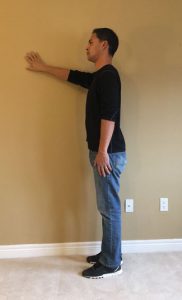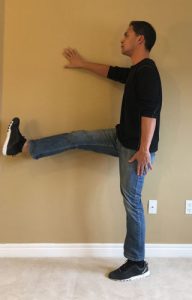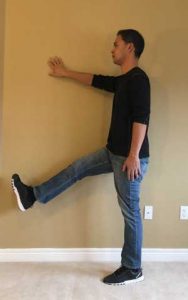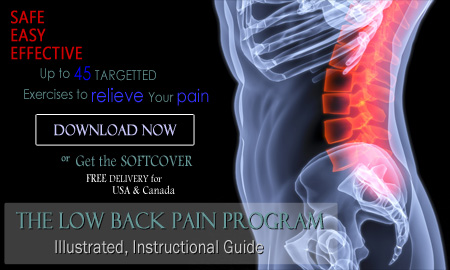Test #1: The Standing Leg Raise

SN Health Resources | Updated July 16, 2025
This is a must test that your legs need so you can start your relief today!
A healthy back must have well conditioned leg, hip and abdominal muscles, without question for protection and stability. Let’s get started on what you can do about it!
If you take care of them and keep them active, your pain will be relieved. Ignore them and you can be at risk. Any failure of any of these mentioned muscle groups will affect your back and can significantly make you sore.
There are 5 quick, essential, tests you can do each in under 1 minute to test and self evaluate your risk.
Begin With Your First Test Now
1) Stand up with your legs straight, close together while keeping your spine straight.
2) Hold on to a firm support to keep yourself upright. You can hold on to a rail, your desk or just the wall.

Use a support for balance
3) While holding on to your support, slowly raise one leg straight up in front of you. Raise as high you can go.
Straighter is better but not a requirement. You can bend at your knee a bit. Raising to 90 degrees is ideal.

Keep your leg & your toes pointing up
4) Hold for 1 second and then return your leg down to the floor.

Avoid bending your knee if you can
5) Measure how high you are able to raise your leg while keeping it straight as possible.
6) Repeat with the other leg and measure how high you can raise this leg now.
How Did You Do?
Did you find it difficult or painful?
Did your hip drop or hurt?
Was there pain the the thigh or strain in the hamstrings or calves?
Did you feel unstable while raising your leg?
Did your pelvis tilt backward/posteriorly?
If you answered yes to any of these, you are definitely having issues that are making it difficult on your back.
If you do not suffer these issues, you should be able to raise your leg straight up to 90 degrees from the other leg (parallel with the floor) for one second rather easily.
You should feel your butt muscle and thigh contracting firmly but it shouldn’t hurt while you are doing it.
One issue you may have noticed, is that you most likely had more difficulty raising one leg more than the other.
This is a sure sign of hip and hamstring muscle imbalances. When this happens, you will have difficulty remaining straight and balanced. You’ll be prone to pain on one side of your body and can also develop hip and knee issues on that side also.
This very simple test reveals tight hamstrings, weak glutes muscles, tight calves, weak quads and weak abs. You need all of them to be able to effectively raise your leg.
This matters because your natural lumbar curve remains preserved and stable when you do this. When conditioned well, your hips and knees are not under stress and are able to protect you from injury.
Being able to perform this first test is your first self evaluation on how important your muscles are for protecting your spine.
Go To Test #2
Next: The Squat Hold Test
Note: This test will help you determine if your lower body is supporting you properly. Without enough leg support your legs tire and your posture and pelvis tilt becomes are worsened.
For additional help with your pain:
Try the next test: The Squat hold
Learning the important tips on how to sleep with back pain
Find out when you should see a specialist for your pain

